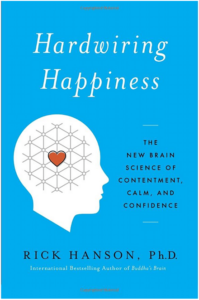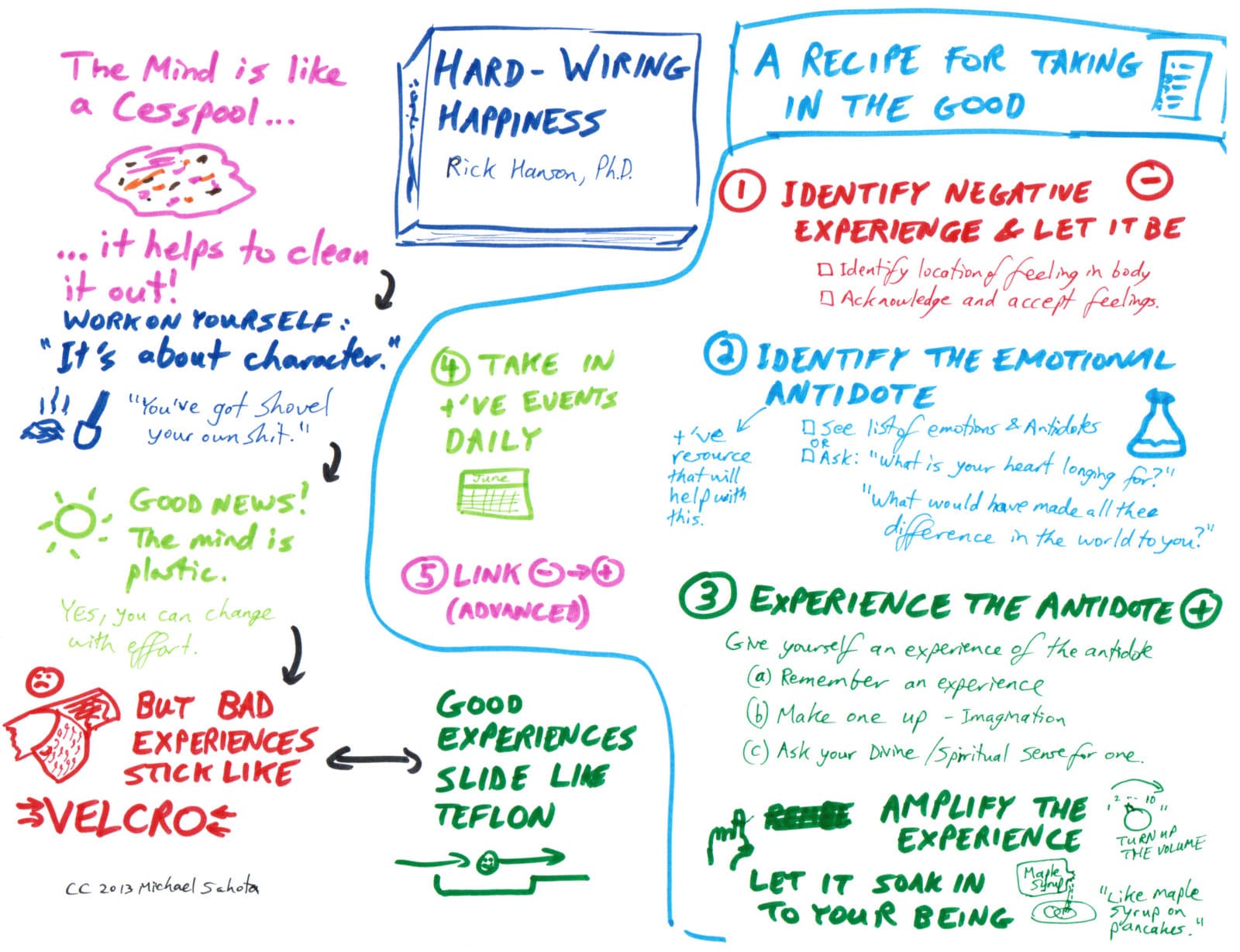Would it be useful to learn how to hard-wire you happiness so that you can be a more effective leader? Or just a happy person? Read on as we explore the key ideas in Rick Hanson’s book Hardwiring Happiness. The New Brain Science of Contentment, Calm, and Confidence.
Leadership is about Character
 Effective leaders are emotionally aware and work hard and staying in a resourceful, positive, happy place. Character is rolling up your sleeves and doing the hard work of dealing with you own shit. Leaders need to work on themselves before they can really help others.
Effective leaders are emotionally aware and work hard and staying in a resourceful, positive, happy place. Character is rolling up your sleeves and doing the hard work of dealing with you own shit. Leaders need to work on themselves before they can really help others.
All major conflicts at work are about Identity according to the Google book Search Inside Yourself: The Unexpected Path to Achieving Success, Happiness (and World Peace). Conflict arises when any of these three questions gets activated:
- Am I competent?
- Am I a good person?
- Am I worthy of love?
So as a leader it is critical that you take care of your own emotional well-being.
Good News! We can Change!
The good news from neuroscience is that are brains are plastic – we can change how they are wired to generate new behaviours and get rid of patterns that are no longer serving us.
Bad News! Negative Events Stick Like Velcro
Our wonderful brains are really, really good and remembering and acting on negative events.
Bad experiences stick like velcro.
Even worse the impact of negative events far outweighs positive events. By 3:1 or 5:1.
So how do we take enough good stuff in to be happy (and great leaders)?
A Recipe for Taking in the Good
Consider the visual note below.
On left, we have a visual summary of the above perspectives.
On the right we have a recipe for taking in the good so that we are resourceful and available when interacting with others.
Let’s go through the five steps in the recipe for taking in the good.
- Identify Negative Experience. Notice your body’s sensations, feelings and thoughts. Get a sense of where the negative feeling is in your body and what it’s about. Don’t fight it – that makes it worse. Just accept it. Acknowledge that it exists. Simply be with it.
- Identify the Emotional Antidote. See Emotional Antidote Map for list of antidotes OR ask yourself “What is your heart longing for?” This is the antidote – the positive resource that will help you.
- Experience the Antidote. You can remember an experience of the antidote. Or imagine one. Or ask your higher power for help. After that, the next thing is to AMPLIFY the experience to make it more powerful and LET IT SOAK IN like maple syrup into a pancake. This may take practice as we are great at deflecting what we really need.
- Daily practice. Take in the positive every day. Focus on the areas where antidotes would be helpful. And then cultivate those antidote. Even small positive experiences add up up – especially when you savour them and let them sink in.
- Linking the negative to the positive (optional). This techniques uses strong positive antidote experiences to scramble negative ones so they don’t effect you any more. I learned about this first from NLP 10 years ago and the practice is tricky to get right so suggest you focus on the other parts of the recipe. In my personal and professional practice I don’t use it as I have more effective techniques for integrating negative emotions.
If you haven’t already done so, you will find more details in the related post on Emotional Antidote Map which goes into more details of that antidote part of the process.
Of course this fits in beautifully with anyone interested in the business benefits of an authentic workplace.
I have been using this method (except step 5) with myself, friends and clients. Enjoy.



